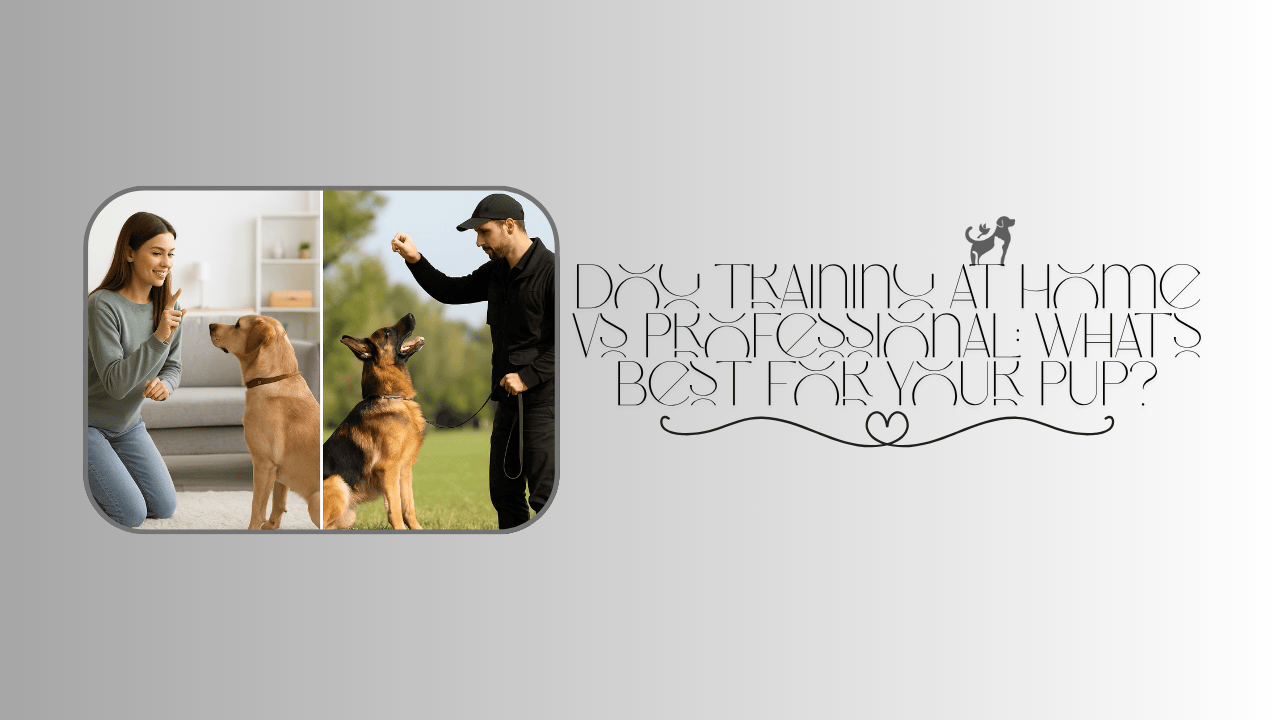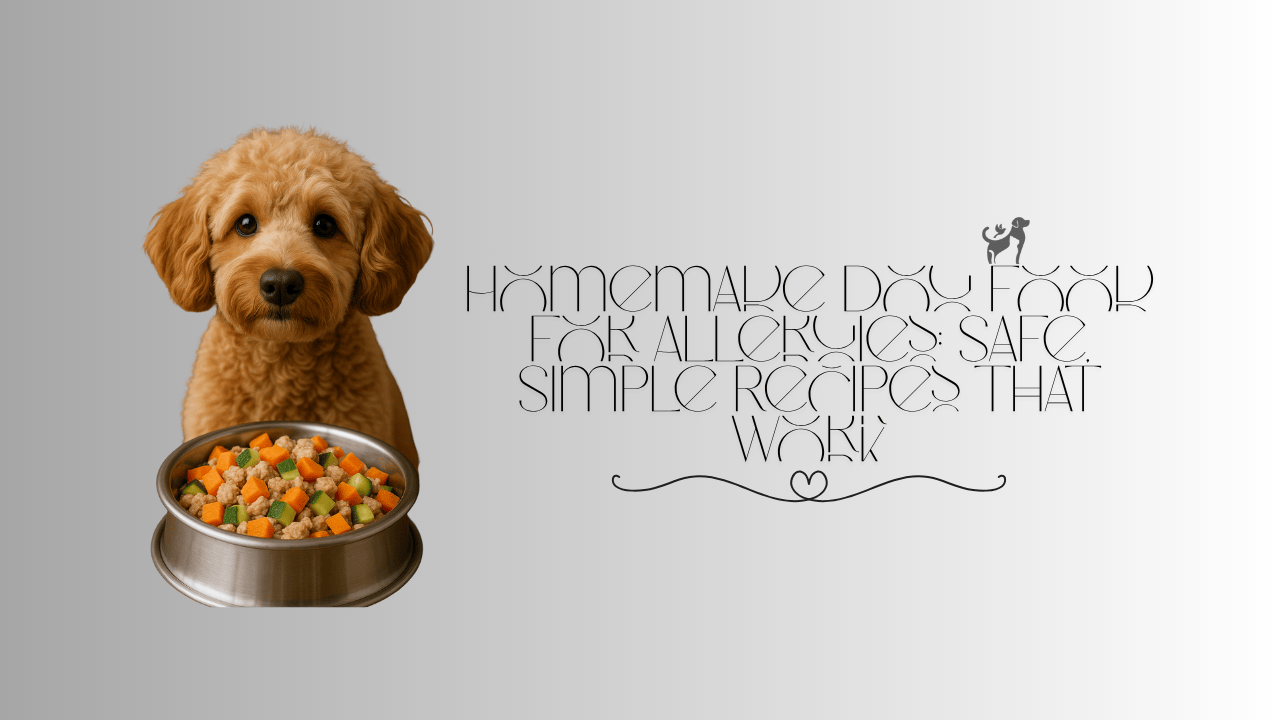Training is one of the most important things you’ll ever do for your dog — but how and where you do it matters too. Should you go the DIY route and train your pup at home? Or enroll them in a class or work with a professional trainer? The answer isn’t one-size-fits-all. In this guide, we’ll explore the pros and cons of dog training at home vs professional training services to help you make the best decision for your four-legged companion.

Key Differences Between At-Home and Professional Training
At a glance, the biggest distinction is who’s guiding the process and where the training happens:
| Feature | Home Training | Professional Training |
|---|---|---|
| Location | Your home/yard | Trainer facility or private session |
| Cost | Low or free | Moderate to high |
| Supervision | Self-guided | Expert-led |
| Customization | High (you control pace) | High (tailored plans) |
| Time Commitment | Flexible | Set schedule |
Let’s break them down in more detail below.
Training Your Dog at Home
Pros of At-Home Training
1. Flexibility
You control the pace, time, and location. Whether it’s a quick 10-minute session or a structured evening plan, it’s fully on your schedule.
2. Strong Bonding
Daily training strengthens your bond. You become the leader and primary communicator, which builds trust and mutual respect.
3. Low Cost
Home training is essentially free. You may invest in a few tools (like clickers or treats), but there’s no formal fee.
4. Real-Life Environment
Your dog learns commands in the exact place they live — making it easier to apply behaviors around distractions like the doorbell or other pets.
Cons of At-Home Training
1. Lack of Expertise
Unless you’ve trained dogs before, it’s easy to make mistakes — like reinforcing unwanted behaviors.
2. Frustration & Inconsistency
Training can test your patience. Without guidance, many pet parents give up too early or confuse the dog with inconsistent commands.
3. Limited Socialization
Unless you arrange playdates or outings, your dog might not learn to behave around other dogs and people.
Professional Dog Training Services
Pros of Professional Training
1. Expert Guidance
Certified trainers have the experience to tailor programs to your dog’s age, breed, and temperament. They also spot and correct subtle behavior issues quickly.
2. Faster Results
Because the training is structured and based on proven methods, results tend to come faster — especially with consistent practice at home.
3. Socialization
Group classes provide exposure to other dogs and humans — critical for building confidence and reducing reactivity.
4. Support for Difficult Dogs
Aggressive, fearful, or high-energy dogs may benefit from techniques you wouldn’t know on your own — like desensitization or redirection strategies.
Cons of Professional Training
1. Cost
Group classes range from $100–$300, while private sessions can exceed $500, depending on location and specialization.
2. Time Commitment
You need to commit to a weekly schedule, and often reinforce what’s taught at home.
3. Not All Trainers Are Equal
Some may not use ethical, positive-reinforcement methods. It’s crucial to vet trainers before enrolling.
Choosing the Right Option for Your Dog’s Personality
Every dog is different. Consider these traits:
| Dog Trait | Better Fit |
|---|---|
| Very social, outgoing | Group classes (professional) |
| Easily distracted | At-home with fewer stimuli |
| Fearful or reactive | Private trainer sessions |
| Eager-to-please & calm | Home training success likely |
| High-energy, hard to manage | Professional structure helps |
What the Experts Say
The American Kennel Club recommends combining basic at-home training with professional guidance, especially during puppyhood. Early socialization and foundational obedience lead to fewer behavioral problems later.
Meanwhile, PetMD advises seeking help from a certified trainer if your dog exhibits signs like biting, leash aggression, or anxiety — things that can escalate if not addressed properly.
Real-World Experience From Pet Owners
“I started training my Labrador, Coco, at home using YouTube videos. It worked for sit and stay, but she pulled like crazy on walks. Once I took her to a local trainer, it changed everything. They showed me how to use a gentle leader and gave us leash exercises to practice. Game changer!”
— Jess, Fluffze reader
“My rescue pup Luna was afraid of everything — cars, mailmen, even ceiling fans. I hired a positive reinforcement trainer who came to our house weekly. By week 5, Luna was walking calmly through the neighborhood.”
— Raj, Fluffze contributor
At Fluffze.com, we see both routes working — the key is consistency and understanding your dog’s learning style.
FAQ: Dog Training at Home vs Professional
Q1: Can I train my dog completely at home?
Yes, especially for basic commands. But for behavior issues or socialization, professional help speeds things up.
Q2: How do I choose a good dog trainer?
Look for certifications like CPDT-KA or memberships with the APDT. Ask about their training philosophy — avoid anyone using punishment-based methods.
Q3: Is group training better than private sessions?
Group classes are great for social dogs; private sessions work better for anxious or easily distracted pups.
Q4: How long should dog training last?
Daily practice should be 5–15 minutes. Professional programs usually run 4–8 weeks, depending on the course.
Q5: Should I use both home and professional training?
Yes! That’s often the best combo — get expert advice, then reinforce at home daily.
Final Thoughts
So, is home training better than hiring a pro? The truth is, it depends on your dog’s needs, your lifestyle, and your goals. At-home training offers flexibility and bonding, while professional guidance provides structure, speed, and problem-solving. For most pet parents, a blend of both works best.
Whether you’re teaching sit and stay in your kitchen or joining a local obedience class, what matters most is consistency, patience, and positivity.
Call-to-Action
If you found this comparison helpful, share it with fellow dog parents and explore more guides on training, health, and canine enrichment at Fluffze.com. We’re here to make pet parenting simpler and smarter!
Written by
Written by Shawn, pet lover & contributor at Fluffze
Shawn has worked with rescue dogs, group classes, and private trainers. He believes in combining empathy with practical guidance to raise confident, well-behaved pups.
Behavioral Training vs Obedience Training
Smart Cat Dental Care at Home: Keep Your Cat’s Smile Healthy
Group Dog Training Classes vs Private Sessions
DIY Dog Shampoo: Safe, Natural Recipes for a Healthy Coat
How to training a dog to not jump on guests?(Opens in a new browser tab)





